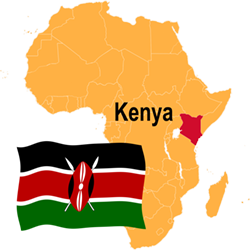 The evaluation assembled and reviewed data regarding the pattern of new cases of COVID-19 at the country level, as well as data on documented COVID-19 response activities (study period, February 2020 through May 2021). The monitoring and evaluation team reviewed documents and conducted key informant interviews with country partners. It documented over 470 COVID-19 response activities in Kenya related to pillars of the COVID-19 response (e.g., surveillance, risk communication, infection prevention, vaccination).
The evaluation assembled and reviewed data regarding the pattern of new cases of COVID-19 at the country level, as well as data on documented COVID-19 response activities (study period, February 2020 through May 2021). The monitoring and evaluation team reviewed documents and conducted key informant interviews with country partners. It documented over 470 COVID-19 response activities in Kenya related to pillars of the COVID-19 response (e.g., surveillance, risk communication, infection prevention, vaccination).
Participatory sensemaking sessions with Kenya country partners helped to identify factors associated with increases or decreases in both new cases and response activities. This sensemaking protocol guided Kenya partners in using questions to systematically reflect on: (a) what they are seeing in the data (i.e., in the pattern of increases or decreases in new cases; and in COVID-19 response activities over time); (b) what it means (e.g., what factors may be contributing to increases or decreases); and (c) implications for adjustment (e.g., expanding partnerships for fuller implementation).
Technical support in monitoring and evaluating the COVID-19 response in Kenya was provided by the Monitoring and Evaluation (M&E) team based in the WHO Regional Office for Africa, in collaboration with the WHO Collaborating Centre for Community Health and Development at the University of Kansas (USA).
[SOURCE: Kenya’s Experience: Factors Enabling and Impeding the COVID-19 Response. Mwakisha et al., Health Promotion Practice, 2023, https://doi.org/10.1177/15248399221117566 ]